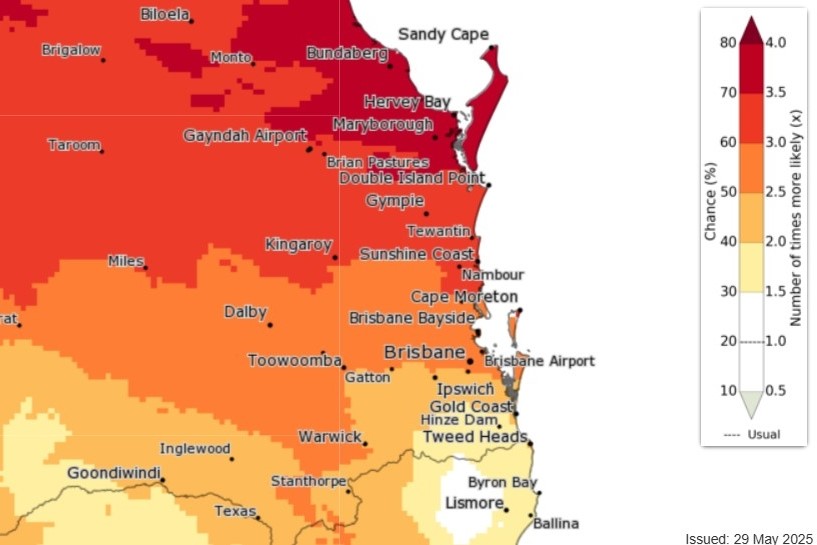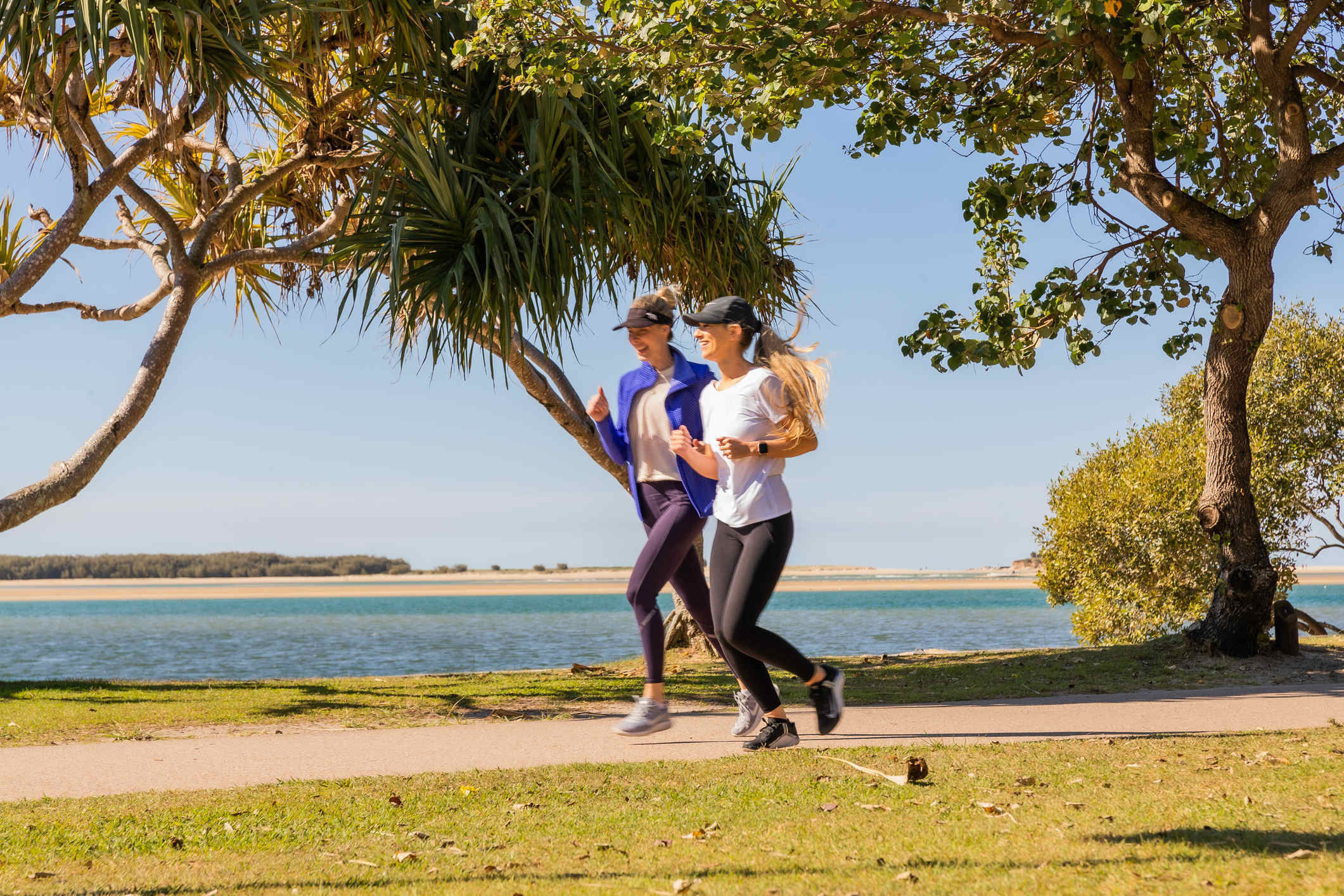The Sunshine Coast’s winter forecast has been revealed and the season could be one for the record books.
The Bureau of Meteorology stated there’s a good chance of unusually high temperatures from June to August as climate change continues to make its impact.
Senior climatologist Hugh McDowell told Sunshine Coast News there could be uncustomary conditions.
“It’s probably going to be a bit warmer than usual,” he said. “It might not feel that wintery.
“There should still be some cold days but, generally, we expect temperatures to be higher than average and there’s a really good chance they’ll be unusually high.”
Want more free local news? Follow Sunshine Coast News on Facebook, LinkedIn and Instagram, and sign up for our FREE daily news email.
The region’s average minimum temperature in winter is about 10 degrees Celsius.
“But there’s a 90 per cent chance of seeing above that and a 50 per cent chance of seeing a good degree or so above it,” Mr McDowall said.
The region’s average maximum temperature in winter is about 21 degrees Celsius.
But Mr McDowell said that “there’s an 85 per cent chance it’s going to be above that, and there’s a 60 per cent chance it’s going to be above 22 and bit degrees”.

He said records could be broken.
“With a forecast like that – a really strong chance of above median (maximums and minimums) and quite a high likelihood of seeing unusually high temperatures – I think we’ll quite likely see some temperature records on the Sunshine Coast,” he said.
“I couldn’t tell you what or where at this stage but I’m quite confident we’ll see something.”
Do you have an opinion to share? Submit a Letter to the Editor at Sunshine Coast News via news@sunshinecoastnews.com.au. You must include your name and suburb.
Mr McDowell outlined why temperatures will probably be higher than usual.
“It’s climate change really,” he said.
“We’ve got warm sea surface temperatures off the coast … and the same with the air temperature.
“Generally, it’s getting hotter year-on-year.”
The highest winter temperature recorded at Sunshine Coast Airport, since data was first collected there in 1994, was 31.4 degrees Celsius in 2016. The highest minimum was 19.4 degrees Celsius in 2002.

After a sodden autumn, including flooding on the Sunshine Coast, there could be above average winter rainfall.
But it’s likely to come towards the end of the season.
“It should be fairly dry to start off with but there’s an increasing chance of rainfall in late winter and into spring: August might be a bit wetter,” Mr McDowell said.
“We’re looking at 60 to 65 per cent chance of seeing above median rainfall across the Sunshine Coast for the whole season.
“Because there’s no strong signal for the first two months that means there is a strong signal (in August).
“We don’t know yet whether it will be significant, but it is likely to get wetter as we get into August and into September.”
That’s despite those two months being the driest, traditionally.

Mr McDowall said water temperature “is above average”, so swimming could still be feasible for many in coming weeks.
He also commented on the surf.
“We’ve seen a lot more easterly swells on the Gold and Sunshine coasts then we’d normally expect at this time of year. There are signs it will slow down now,” he said.





